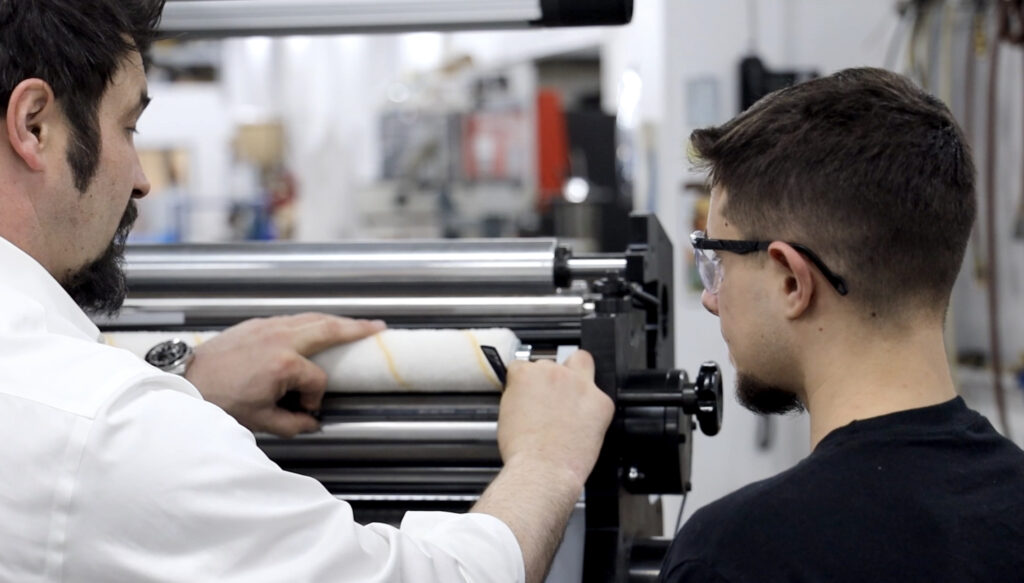Flexographic printing refers to a type of printing where flexible, photopolymer plates are wrapped around a rotating cylinder to press each color onto a substrate. Similar to letterpress printing processes, text and graphics for each color are raised on the surface plate and inked to transfer to a substrate. A typical setup for flexographic presses includes four types of rollers: fountain and anilox rollers, plate and impression cylinders.
How the Type of Rollers in Flexography Work
The fountain roller takes ink from the ink reservoir to a ceramic or steel anilox (ink-metering) roller, which is then transferred to a plate cylinder and applied to a substrate such as paper or corrugated as it passes between the plate cylinder and the impression cylinder. The impression cylinder is what applies pressure that is required to transfer ink onto the substrate.
The anilox roller is what transfers the ink in a uniform process to the flexible printing plate and is the roller that also contains the engraved cells to hold ink capacity. Optionally, another type of roller called a doctor blade can be used to wipe or scrape against the anilox roller to make sure that the only ink transferred to the substrate is from the engraved cells. As the substrate moves throughout the flexible press, each printing deck applies a different color or coating.
Types of Flexo Presses
Not all Flexo presses are designed and engineered the same way, although the concept is the same with the substrate moving through the various rollers for a different color of ink or coating application. Some type of drying unit such as UV light, infrared or hot air is typically located between the printing decks to ensure that each color is completely dried before moving onto the next roller. This process happens so quickly, in the blink of an eye, to ensure high volume and high quality.
Different types of presses include a stack press, where the printing decks are vertically stacked. This type of design can also print on both sides of the substrate as it moves through the press.
Another design includes a central impression (CI) type of Flexo press where the printing decks are located around a large, single impression cylinder. This type of press often provides excellent registration.
Wide-web flexo presses are designed to handle large rolls of material anywhere from 21 to 80 inches wide. Narrow web presses are typically designed for smaller materials and shorter runs such as 10 inches or up to 20 inches wide. This type of Flexo press is often used to make packaging for smaller products like drink mixes, bottle wraps, single-serve packs, tea pouches, and similar items.
Flexographic Press Inks
The inks used in flexographic printing presses can be solvent-based, water-based, or energy curable inks such as those cured by UV lighting or electron beam (EB) systems. EB inks and curing systems do not require photoinitiators such as UV curable inks as they deliver energy directly to the inks in the form of energetic electrons. This alters the molecular structure providing a quick-dry solution without affecting quality or aesthetics.
Substrates Used for Flexography
There are many types of substrates that can be used with flexographic printing such as coated or uncoated papers, liner board, corrugated, carton board, foils, and different types of plastic films such as polypropylene (PP), low-density polypropylene (LDPE), bio oriented polypropylene (BOPP) and polyester (PET). Other substrates may include different types of laminates or fabrics.
Tamarack® Products is an industry-leading global supplier of custom-engineered, in-line, and off-line labeling and patching systems. We design, engineer, and manufacture machinery and equipment that is flexible and modular, custom-designed to meet your specific requirements, and can be integrated with your current equipment process. Contact us to experience the Tamarack® difference and learn about all the benefits that come with high quality, efficient and reliable Flexo press and web finishing solutions.





